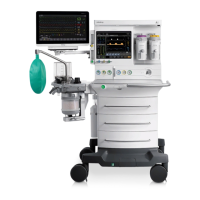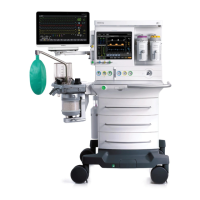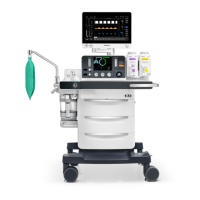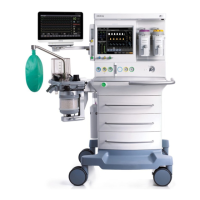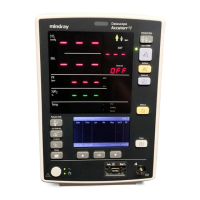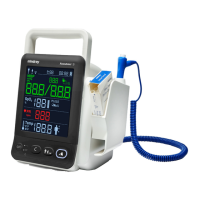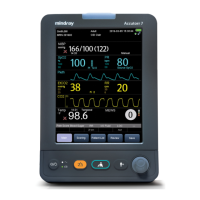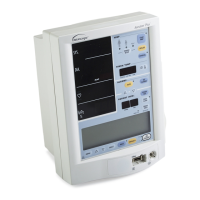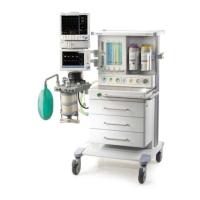Setting Alarm Limits Alarms and Messages
8 - 10 Operator’s Manual of Anesthesia System
8.6.1 Auto Alarm Limits
The Auto Alarm Limits function uses an algorithm based on measured values. The relationship is
shown in the table below.
When the System is in Standby mode or Manual mode, the [Auto Alarm Limits] button will be
disabled. The [Auto Alarm Limits] key is also disabled when the current mode is PS, SIMV-VC, or
SIMV-PC.
The parameters in the formula are all measured parameters.
The alarm limits for PEAK are calculated on the basis of the average value for PEAK, PLAT, and PEEP.
The value used for average uses the value of the last four ventilation cycles or the value in one
minute, whichever is smaller. Spontaneous breaths by the patient are not taken into account.
The alarm limits for Vt and RR are calculated on the basis of the average value. The value used for
average uses the value of the last four ventilation cycles or the value in one minute, whichever is
smaller. Spontaneous breaths by the patient are not taken into account.
If there is no valid MV, Vte or RR measurement value, the corresponding alarm limits will not be
adjusted.
If the average value of PEAK, PLAT, and PEEP cannot be calculated, the corresponding alarm limits will
not adjust.
If the calculated alarm limit is more than the high threshold of setting range or less than the low
threshold, the corresponding threshold is used as the auto alarm limit.
ALARM LIMIT ADJUSTMENT FORMULA
PEAK High PEAK+5 or PLAT+10, whichever is greater.
Minimum: 35 cmH
2
O.
PEAK Low (PLAT-PEEP) x 0.6 + PEEP - 1
Minimum: 3 cmH
2
O.
Maximum (PEAK High - 1)
MV High MV x 1.4
Minimum: 2.0 L/min
MV Low MV x 0.6
Minimum: 0.1 L/min
Maximum (MV High - 0.1)
Vte High Vte x 1.4
Vte Low Vte x 0.6
RR High RR x 1.4
RR Low RR x 0.6
Table 8-2 Auto Alarm Limits

